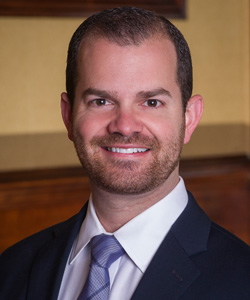Reverse Total Shoulder Replacement

Have you been suffering from chronic shoulder pain? If so you’re not alone. In 2006 7.5 million people saw a doctor for shoulder problems. Chronic shoulder pain due to arthritis can stop you from performing basic everyday tasks like lifting, sleeping comfortably or playing sports. If shoulder pain is impeding your day to day life, it’s time to see an orthopaedic specialist, and you may be a candidate for a shoulder arthroplasty.
What is Shoulder Arthroplasty?
Shoulder arthroplasty, or total shoulder replacement surgery, involves the removal of arthritic bone and tissue in the shoulder and replacement with an implant to alleviate pain and improve function. While shoulder replacement surgery is not as prevalent as hip or knee replacement, around 53,000 people have shoulder replacement surgery annually in the US according to the American Academy of Orthopaedic Surgeons.
In conventional shoulder arthroplasty, prosthetics are used to recreate the natural anatomy of the shoulder. With this method, a polyethylene component is used to replace the damaged glenoid joint socket, and a metal ball is used to replace the humeral head. While this method can be effective for some, it relies on a properly functioning rotator cuff. The rotator cuff is a group of muscles and tendons in the shoulder that elevates and rotates the arm. Following a conventional shoulder replacement surgery, if the rotator cuff is torn or damaged, the new shoulder is then at risk of failing again. This is where the alternative surgical method of reverse total shoulder replacement comes into play.
What is a Reverse Total Shoulder Replacement?
Reverse total shoulder replacement works just like the name suggests. Instead of placing the “ball” of the joint on the top of the humerus, the ball is implanted onto the socket and the socket fixed to the top of the humerus. This construct relies on the sturdier deltoid muscle rather than the rotator cuff to elevate, rotate, and stabilize the arm. This method is often used on patients who have failed after a conventional shoulder replacement surgery or who have had a previous rotator cuff injury.
Recovery for Shoulder Surgery

The recovery time for reverse shoulder replacement surgery is typically comparable to that of conventional shoulder replacement. After surgery, your arm will be placed in a sling, and physical therapy is started shortly after surgery work on range of motion and strengthening.
These are traditionally performed in a hospital setting with patients spending a night or two in the hospital, however, newer surgical and anesthesia techniques are allowing these to be performed as an outpatient procedure.
Treatment at MidAmerica Orthopaedics

Adam F. Meisel, MD
At MidAmerica Orthopaedics Total Joint Clinic our upper extremity experts are well versed in both conventional and reverse shoulder surgery methods.
Among our experts is Dr. Meisel, who specializes in sports medicine and arthroscopic surgery as well as shoulder arthroplasty.
In addition to his practice, Dr. Meisel continues to be active in research to stay on the cutting edge of medicine in order to provide the best possible care for his patients.
To learn more about MidAmerica Orthopaedics Sports Medicine and Total Joint Clinics and the different shoulder surgery treatment options available to you, visit our website or give us a call at (708) 237-7200. You can also request an appointment online. MidAmerica Orthopaedics serves various areas such as Chicago, Tinley Park, Palos Hills, Mokena, Evergreen Park, New Lenox, Oak Lawn, Orland Park and more.

